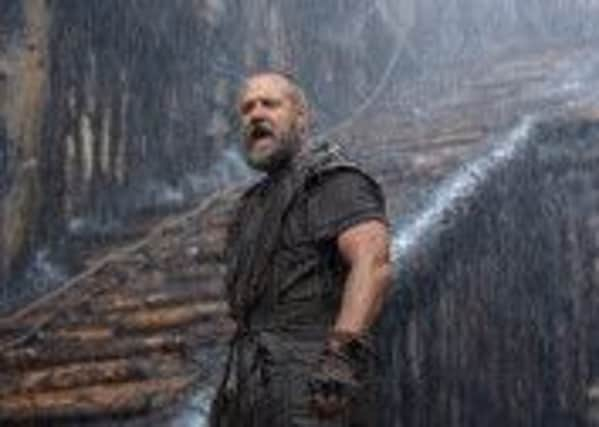Art can enrich the ‘greatest story’


I SAW the film Noah last week. And I stayed awake for the full two hours and 18 minutes … just. The trouble with Biblical epics is that they have to satisfy several audiences: the devout who wish for an onscreen depiction of their well-thumbed biblical stories and the average cinemagoer who wants epic 3D floods with their bucket of popcorn and Pepsi Max.
It’s not that Noah is a bad film. It’s not an evil, heretical, Hollywood subversion of Christian civilisation that deserves to be placed on a modern day Index of Forbidden Blockbusters – it’s just pretty dull.
Advertisement
Hide AdAdvertisement
Hide AdThere are issues it tackles that deserve consideration and discussion, but they are handled in a lumbering way. (While talking of lumbering, the lava-coated giant angels who limp athritically through the film must go down as the least convincing monsters Hollywood has come up with in a long time – 1970s Doctor Who Daleks were more convincing.)
In sequences clearly devised for the “hard of thinking”, the audience is instructed in a heavy handed and unsubtle way to believe that developers are bad and nature is good; animals are innocent and human beings are guilty; eating meat is bizarre and vegetarianism is normal and that God is basically a Green.
But what about the religion in the story? The film is a basic telling of the Biblical story of Noah, called by God to save representatives of Creation so that the world can, in a sense, begin again after the flood.
But the angry God depicted is hardly likely to win the devotion of a neutral cinema-goer who may have popped in to the movie hall to learn more about the Bible.
Seeing the film made me reflect on the wider question of whether the mysteries of faith, which pop up on to the public radar with predictable regularity at this time of year as we approach Easter, can ever be properly and profitably examined through the medium of film – or any other artform, for that matter.
And despite the weaknesses of Noah, my answer has to be yes. Who could fail to have been moved, challenged or consoled by Zeffirelli’s classic Jesus of Nazareth?
My own preference is for the austere but impressive Gospel of St Matthew by Pier Paolo Pasolini (himself an atheist), which was everything Noah was not. It used non-professional actors and was shot on low-budget locations in southern Italy, using neo-realist techniques and values.
Pasolini’s film is worth searching out, both for believers and sceptics – large segments are available on YouTube – especially in the days of Holy Week that lie ahead. Made in 1964, shot in black and white, using only the Gospel texts for the dialogue, its power is greater than any big budget blockbuster.
Advertisement
Hide AdAdvertisement
Hide AdThe director’s own story is illuminating on many levels. He had accepted Pope John XXIII’s invitation for a new dialogue with non-Catholic artists, and subsequently visited Assisi to attend a seminar at a monastery there during the Pope’s 1962 visit to the Umbrian hill town. The papal visit caused traffic jams, leaving Pasolini confined to his hotel room. There, it is said, he came across a copy of the Gospels. He read all four straight through, and claimed that adapting a film from one of them “threw in the shade all the other ideas for work I had in my head”.
When the film was released, the reaction was extreme. Given Pasolini’s well-known reputation as a gay Marxist atheist, the reverential nature of his film surprised many, At a press conference in 1966, Pasolini was asked why he, a non-believer, had made a film which dealt with religious themes.
His response was: “If you know that I am an unbeliever, then you know me better than I do myself. I may be an unbeliever, but I am an unbeliever who has a nostalgia for a belief.”
Holy Week, which begins on 13 April, Palm Sunday, is a good time to look again at how art has depicted “the greatest story ever told”.
Whether it be through looking again at the fearful brutality of the crucifixion captured in Mel Gibson’s The Passion of the Christ, or listening to the soulful beauty of Stabat Mater by Pergolesi, or even by viewing Rabbie Burns actor John Cairney’s powerful Glasgow Stations of the Cross – currently on show at St Patrick’s Church in Anderston, Glasgow – your experience of Holy Week will be enriched and deepened through contact with art.
Just don’t expect any of that enrichment to come via Noah.
• Ronnie Convery is director of communications, Archdiocese of Glasgow: www.rcag.org.uk
SEE ALSO